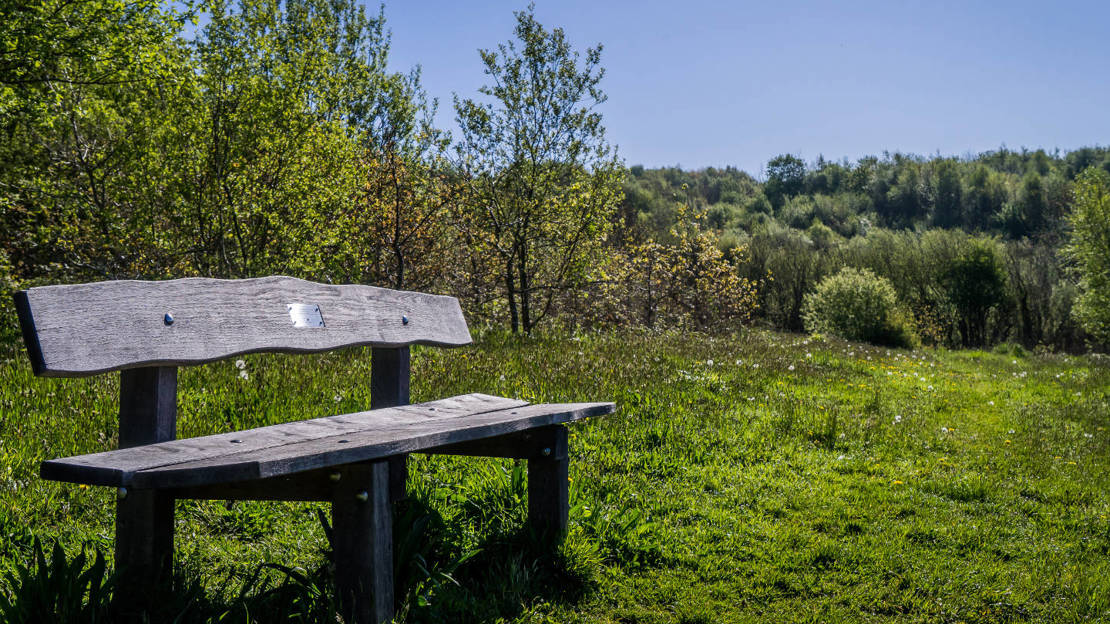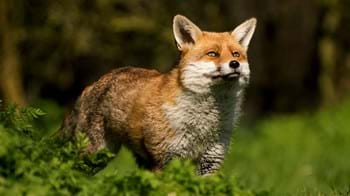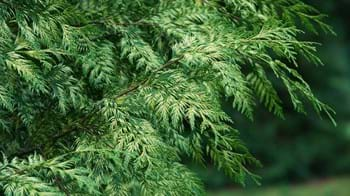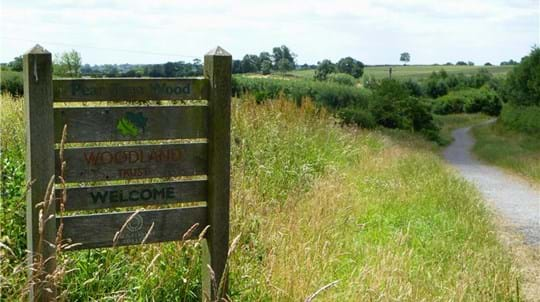
Martinshaw Wood
Ratby & Groby

Woodland Trust wood
102.84 ha (254.12 acres)
SK510072
Explorer 233
OS Landranger 140
Set across 103 hectares (254 acres), Martinshaw Wood is a vast and picturesque woodland, steeped in history. Situated in the National Forest, the wood also features a diverse range of habitats and wildlife. With links to nearby woods and an extensive path network, it’s a wonderful place to enjoy a walk, cycle or horse ride.
Features
- Parking at site
- Public access
- Spring flowers
How to get to Martinshaw Wood
Martinshaw Wood is located 8km (5 miles) north-west of Leicester, sandwiched between the villages of Groby and Ratby. Together with Pear Tree Wood and Burroughs Wood, also owned by The Woodland Trust, the woods form the south-eastern boundary of the National Forest. Combined, they add up to 158 hectares (390 acres) – the largest continuous area of woodland in Leicestershire and the National Forest.
Martinshaw Wood was cut in two by the M1 motorway in 1969. The two parts are now connected by a bridge crossing the motorway.
Travel along the M1, exiting at junction 21a onto the A46. Leave the A46 at the next roundabout by taking the last exit onto Leicester Road. At the following roundabout, take the first exit onto Sacheverell Way. Shortly before entering Ratby, Sacheverell Way changes to Groby Road and then crosses back over the M1. At the roundabout, take the first right onto Markfield Road.
The car park and main entrance to Martinshaw Wood are just over 350 metres along Markfield Road, on the right. The eastern side of the wood can be accessed from this car park by using the bridge over the motorway.
The nearest train station is Leicester, approximately 8km (5 miles) from Ratby and Groby.
Visit National Rail for more information.
The closest bus stop is on Markfield Road, directly opposite the main entrance to the wood.
Visit Traveline for more information.
Facilities and access
Many of the paths within the woodland have short, steep or muddy sections and are not suitable for all abilities. However, Martinshaw Wood does provide wheelchair access via a 1.6km (1 mile) circular all-ability access track located in the eastern portion of the woodland, starting from Groby Community College, running north. This footpath links both to the main east-west ride and an additional loop through the trees which are both suitable for all abilities.
There is an entrance from the carpark through a wooden kissing. Beyond the entrance there is a surfaced track. This track also accommodates the Sustrans bridleway for both bicycles and horses. The eastern side of the wood can also be accessed from the car park by using the bridge over the motorway.
Access from the Groby side is via pedestrian entrances at the northern end of Woodlands Drive and the public footpath at the back of Groby Community College off the southern end of Woodlands Drive, Groby.
All entrances to the eastern, Groby side of the wood are via large kissing gates with RADAR access. After 100 metres there is a gate where the bridleway turns left and crosses the south-west corner of Martinshaw to Markfield Road and the western section of the Sustrans route through Pear Tree, Burroughs, Polebrook and Crow Woods and then to Thornton. Where the bridle path turns left there is access to a further section of surfaced track which extends for 0.8km (0.5 miles).
There are plenty paths and rides throughout the western section of the wood and although many are broad, the grassed surface is often soft and unsuitable for wheelchairs or pushchairs.
There is free parking available at the car park on site. It is located on the western side of the wood, accessible from Markfield Road, Ratby. There are 10 parking spaces available.
There are no public toilets nearby, but there are many establishments in Ratby and Groby which will have facilities for customers.
Wildlife and habitats
Animals
Martinshaw Wood is the perfect place to see a host of rare and interesting insects. Bees, butterflies, hoverflies and damselflies are abundant during the summer months, and beetles can be seen throughout the year. The wood is also home to 270 species of moth, many of which are rare.
Birds are also plentiful in the wood, with at least 39 species present. Look out for a glimpse of the elusive woodcock, listen for the flute-like song of the mistle thrush or see if you can spot the great spotted woodpecker. The coal tit, goldcrest and sparrowhawk have also been seen in the wood, favouring the conifers found throughout.
Trees, plants and fungi
Martinshaw Wood contains a rich array of 36 tree species, including Scots and Corsican pine, western red cedar, Lawson’s cypress and aspen. This assortment of species makes for a kaleidoscope of autumnal colours, from rich red to bold yellow, to the deep teal of the evergreens.
The areas around the flooded marl pits (where marl was quarried in the past for farming) are home to willow moss, tufted water forget-me-nots and lily-of-the-valley, while wood anemone and rare eared-sallow indicate this is an ancient woodland site.
Fungi are prominent throughout Martinshaw Wood, from stinkhorn to candlesnuff fungus.
Habitats
Made up of an assortment of habitats, from ancient woodland to conifer plantations, Martinshaw Wood is 102 hectares in size - making it a great place to explore.

Dedicate at this wood
This wood is one of more than 50 across the UK where it's possible to dedicate trees, benches or larger areas of woodland. Mark a special occasion or celebrate the life of a loved one with a meaningful gesture that lasts.
Choose a dedicationHistory of Martinshaw Wood
Martinshaw Wood might be one of the woods mentioned in the Domesday Book as lying within the Manor of Groby. By the 13th century, the wood was established as a wooded enclosure in a deer park. The estate sold timber to the local economy and quarrying and later planted the site with conifers.
The woodland was clear felled in the early 20th century before it was taken over by the Forestry Commission in 1950.
Between 1954 and 1969 the Forestry Commission planted species of both native and exotic broadleaves and conifers the woodland as a commercial plantation.
The Woodland Trust purchased the site in 1986 and we’ve been restoring it to its former glory ever since.

Credit: Katherine Jaiteh / WTML
Archaeology
In 2004, volunteer researcher Peter Bloxham undertook an extensive historical survey of Martinshaw Wood, uncovering archaeological features which reflect the former uses of the wood.
The oldest feature discovered was a potentially Iron Age enclosure at the north end of the Groby part of the site. Other features that were discovered include banks and earthen dams across streams and a wide, sunken track which appears to run towards ancient stone quarries.
Things to do in Martinshaw Wood
Walking
Pull on your walking boots and explore Martinshaw Wood, as the National Forest Way runs through it. Or, embark on the Leicester Ivanhoe Trail or take in the historic Ratby Burroughs area.
Horse riding
With a permissive bridle/cycle path running through the wood and those nearby, travelling by horse is a great way to get around Martinshaw Wood. It forms part of a long distance bridleway between Leicester and the National Forest.
Please keep to the designated bridleway when riding your horse in the wood.
Orienteering
Grab your compass and get ready to explore! Martinshaw Wood is a great place for orienteering, with a permanent course easily identified by sign posts. The wood is popular with Leicestershire Orienteering Club, which use the wood for events and training.









































